This elegant still life, painted circa 1950 by Béla Balogh, is a lush composition that exemplifies mid-20th-century European realism. The scene bursts with opulence: a rich arrangement of fruits, fine vessels, and cut flowers draped across a white satin cloth.
At the center, a silver bowl overflowing with grapes, apples, peaches, and other fruits glistens under soft light, rendered with exquisite attention to texture and form. Nearby, ornate goblets and a decorative ewer—likely made of gilded metal and porcelain—add a touch of aristocratic luxury.
To the left, a vase overflowing with white, pink, and purple flowers stands against a deep blue velvet drapery, contrasting beautifully with the cream-toned backdrop. The silk folds and shimmering reflections across the metallic surfaces showcase Balogh's technical skill and dedication to classical still life traditions.
Signed in the lower right, this painting is a fine example of Balogh’s ability to blend academic technique with a romantic eye for detail, evoking the 17th-century Dutch and French masters while maintaining a distinctly 20th-century polish.
Béla Balogh (1910–1980) was a Hungarian painter best known for his still lifes and floral compositions. Born in Hungary, Balogh was active during a turbulent period in European history, yet he managed to preserve a deep devotion to beauty, form, and classical artistry throughout his career.
He trained at local art academies during the interwar years, where he absorbed traditional techniques rooted in Baroque and Academic Realism. His work was heavily influenced by Dutch Golden Age still life painters, with an emphasis on rich textures, harmonious compositions, and controlled lighting.
Balogh’s works found favor among collectors in Hungary, Austria, and Germany, especially in the 1940s–60s, as they offered a sense of calm, elegance, and refinement amidst postwar recovery. Though not widely exhibited in major institutions, his paintings were highly sought after in private circles, and many remain in European collections today.
Balogh rarely experimented with modernism, preferring to maintain a timeless aesthetic, with a focus on opulence, order, and classic beauty. His works are recognized by their sumptuous palette, fine attention to surface detail, and masterful renderings of light on fabric, fruit, and metal.
Balogh passed away around 1980, leaving behind a legacy of technically refined and emotionally resonant still lifes that continue to appeal to admirers of traditional European art.
Artist: Bela Balogh (1909-1980)
Signed in the lower right corner.
Medium: Oil on canvas.
Condition: Excellent condition.
Dimensions: 79 x 61 cm. / 31 x 24 in.
Frame: 99,5 x 79 cm. / 39 x 31 ½ in. Sculpted, distressed wood finish, off-white and gold. Good general condition.
Free Shipping to Canada, US, UK & France.



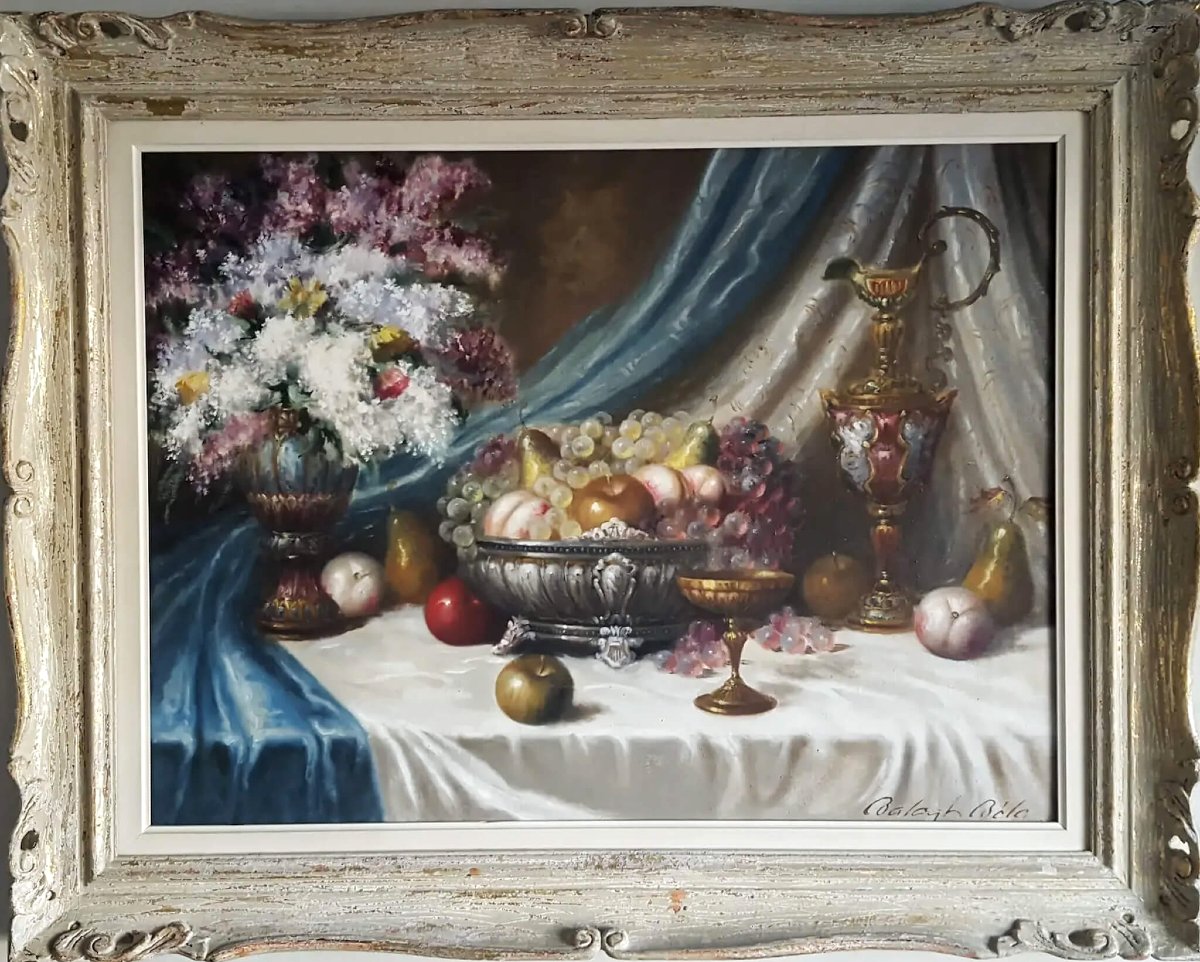


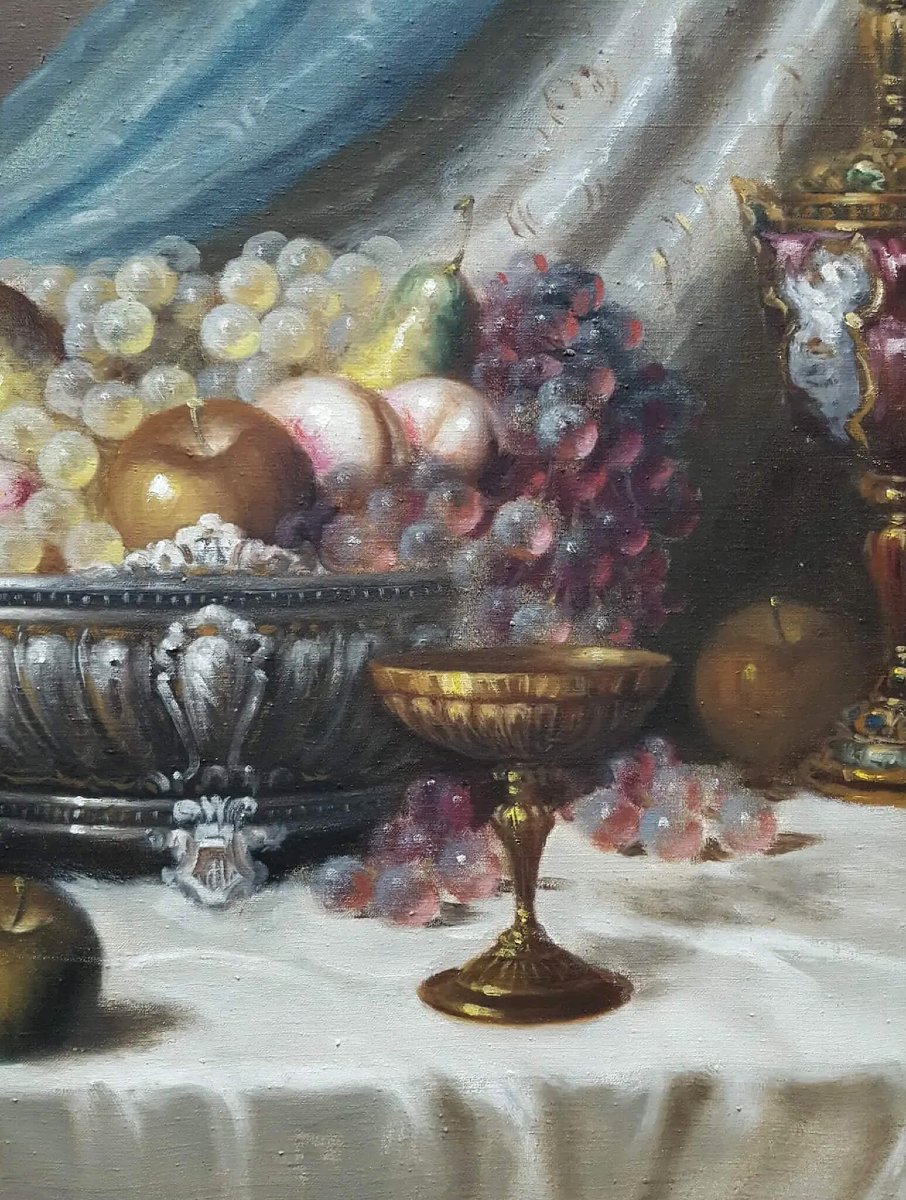




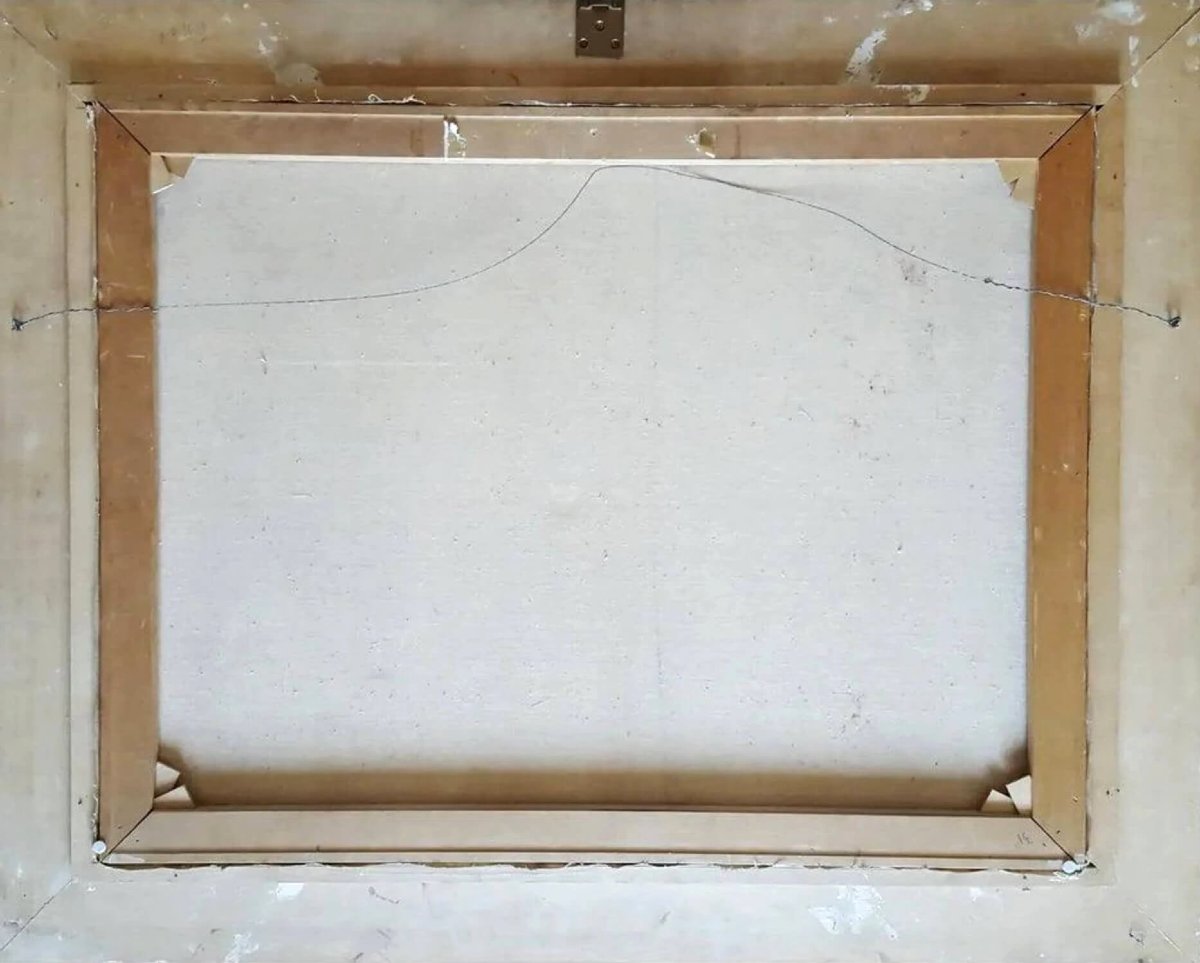
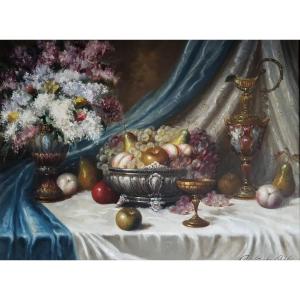














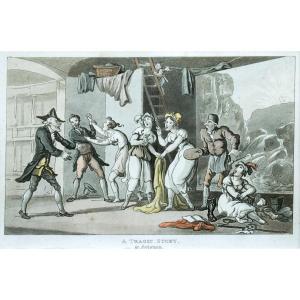








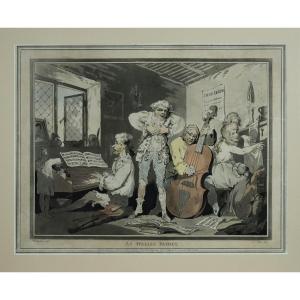



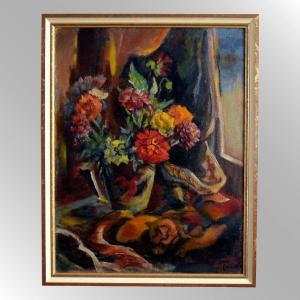

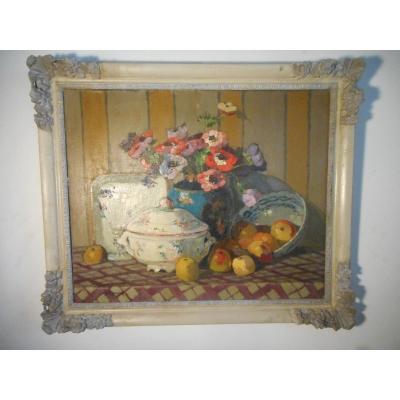



 Le Magazine de PROANTIC
Le Magazine de PROANTIC TRÉSORS Magazine
TRÉSORS Magazine Rivista Artiquariato
Rivista Artiquariato